I thought Python assignment statements were 'pass by value'. For example
b=0
a=b
b=1
print(a) #prints 0
print
(b) #prints 1
However, I am confused by a different behavior when dealing with other kinds of data. From this tutorial on openCV I modified the code slightly to show two images. The code below takes this image:
 and adds it into this image
and adds it into this image

and repeats the process, adding this image
onto the same base image.
import cv2
import numpy as np
# Load two images
img1 = cv2.imread('3D-Matplotlib.png')
#img1a = img1
img1a = cv2.imread('3D-Matplotlib.png')
img2 = cv2.imread('mainlogo.png')
img3 = cv2.imread('helloo.png')
# I want to put logo on top-left corner, So I create a ROI
rows,cols,channels = img2.shape
roi = img1[20:rows+20, 20:cols+20]
rows3,cols3,channels3 = img3.shape
roi3 = img1[50:rows3+50, 50:cols3+50 ]
# Now create a mask of logo
img2gray = cv2.cvtColor(img2,cv2.COLOR_BGR2GRAY)
# add a threshold
ret, mask = cv2.threshold(img2gray, 220, 255, cv2.THRESH_BINARY_INV)
#anything crossing over 220 is thelower limit
#binary threshold is 0 or 1
#anything> 220 goes to 255
#anything below 220 goes to 0-> black
#and create its inverse mask
mask_inv = cv2.bitwise_not(mask)
#do same for img3
img3gray = cv2.cvtColor(img3,cv2.COLOR_BGR2GRAY)
ret3, mask3 = cv2.threshold(img3gray, 140, 255, cv2.THRESH_BINARY_INV)
mask_inv3 = cv2.bitwise_not(mask3)
# take the ROI of the plot, and throw the mask over it
img1_bg = cv2.bitwise_and(roi,roi,mask = mask_inv)
# Take only region of logo from logo image.
img2_fg = cv2.bitwise_and(img2,img2,mask = mask)
#do the same with the other mask
img3_bg = cv2.bitwise_and(roi3,roi3,mask = mask_inv3)
img3_fg = cv2.bitwise_and(img3,img3,mask = mask3)
#
dst = cv2.add(img1_bg,img2_fg)
dst3 = cv2.add(img3_bg,img3_fg)
img1[0:rows, 0:cols ] = dst
img1a[50:rows3+50, 50:cols3+50 ] = dst3
cv2.imshow('r1',img1)
cv2.imshow('r3',img1a)
cv2.waitKey(0)
cv2.destroyAllWindows()
In the above posted code, I get

If I comment out line 7 and uncomment line 8, I would expect the same result if it was pass by value. But I get something else
Both images are the same. Obviously, the manipulations onto img1 are 'carried over' to img1a because img1a is set to be equal to img1. If the assignment statement was 'pass by value' (as I would expect from python), then img1 and img1a should be different. But since they are the same, I conclude that img1 is a ptr that was passed to img1a. Thus, if I try to print img1a, I get the same data as I would from printing img1.
So maybe images are passed by reference? What other data types in Python behave this way? Arrays? Dictionaries? Or am I totally wrong and confused.

